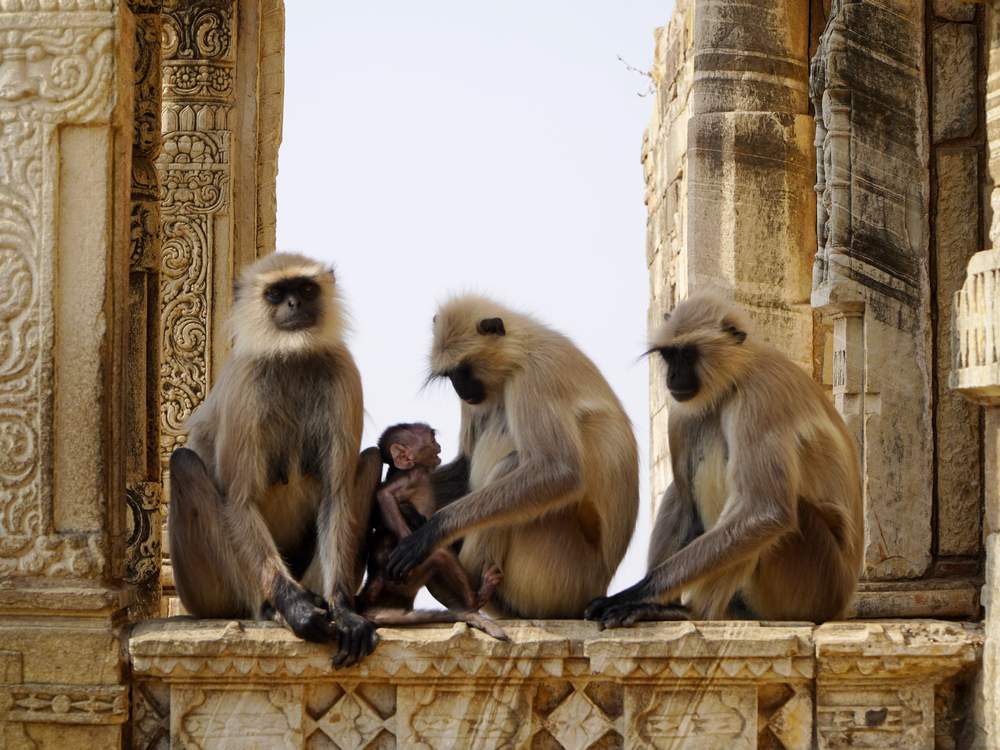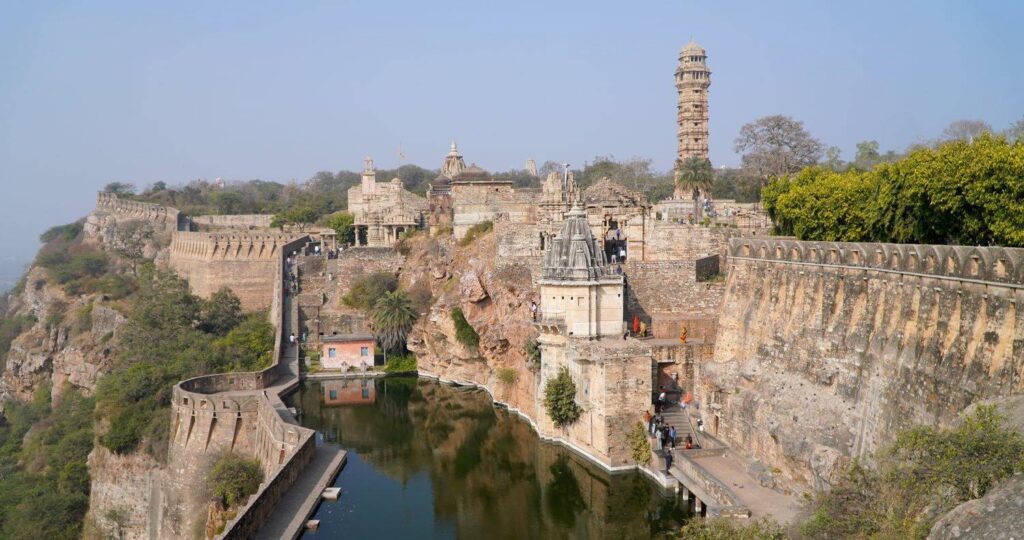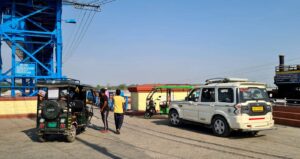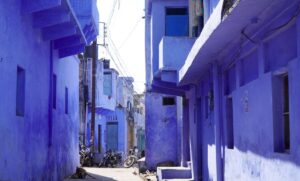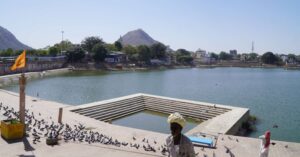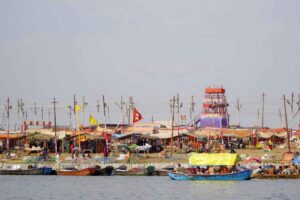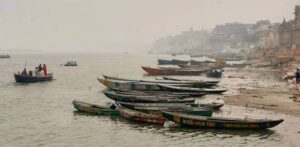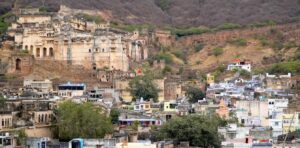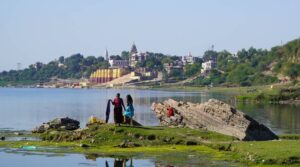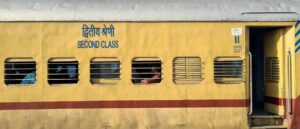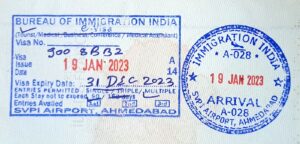▶ Destinations ▶ India
Visit Chittorgarh
Discover in this travel guide the best activities not to be missed, places to see and things to do in Chittor. Also find information about accommodation to know where to sleep, when and how to go. This city has many activities to occupy your stay.
About Chittorgarh
Chittorgarh (or Chittor ; Chittaurgarh) is a city in northern India located in the state of Rajasthan about a hundred kilometers from Udaipur. It was one of the capitals of the Mewar region (formerly Medapata) once ruled by the Rajput. Its tourism revolves around a major unmissable activity: the visit of its historic fort which has the particularity of being the great of the whole country, but also one of the largest of the Asian continent.
Chapka insures your trip to India
Get it now
Things to visit around Chittorgarh
Cultural activities
Most of the things to do and tourist attractions in Chittorgarh are concentrated within the walls of the fort. Its area is 283 hectares, imagine. All places of cultural and historical interest can be found here. It is not for lack of having scanned all the surroundings in search of other activities. Presumably, there is nothing of notability.
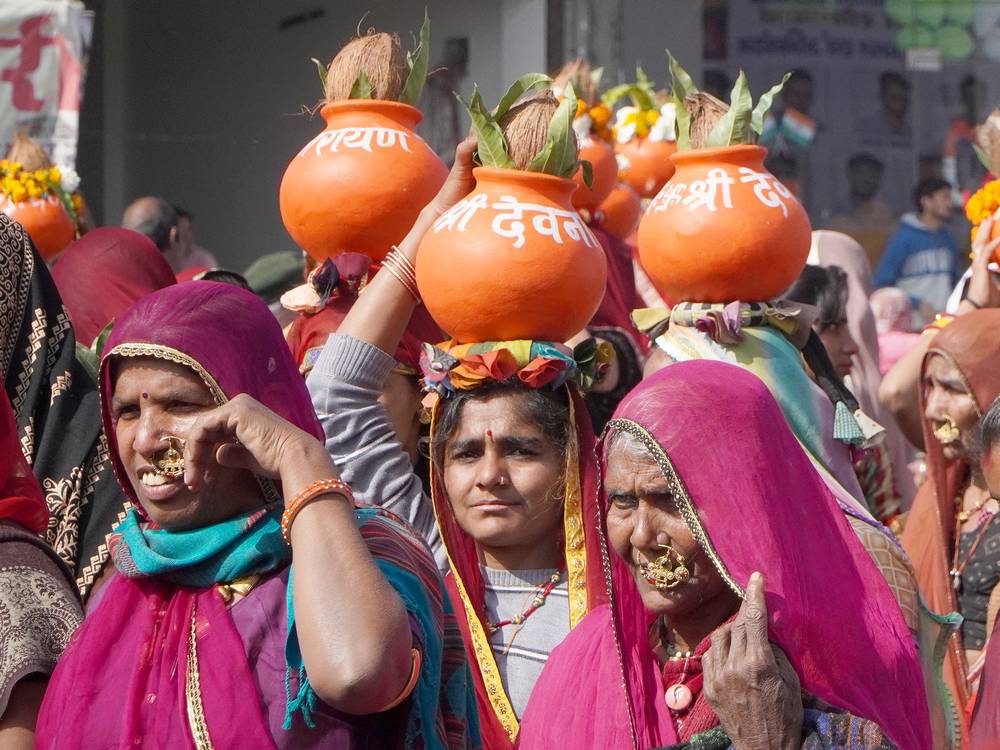
Outdoor Activities
In addition, the nature in the surroundings promises beautiful outdoor activities by the presence of the many hills that offer beautiful views, hikes or the presence of the many waterfalls.
Cave paintings
The surroundings of the Chittorgarh district include many rock sites. Something picked out as almost all of them are not shown on the maps. These paintings mostly date from the Mesolithic period and some of them are truly remarkable. There are a large number of sites, requiring routes of several tens of kilometers. They extend to the district of Bundi and know the borders of Madhya Pradesh but benefit from the services of a tourist guide because of their unspecified locations.
Visit Chittor Fort
The city is named after the fort: Chittorgarh means “Chittor’s Fort”, since it was the seat and the first “official” foundations of the current city. The monument was built in the 7th century by Rajput Chitrangada Mori and was then besieged by Bappa Rawal, a Rajput belonging to another clan. He will make Chittor the capital of the Kingdom of Mewar that he himself founded. This Rajput of the Guhila clan is credited with repelling the Arab invasion of India.
Jain Kirti Stambha
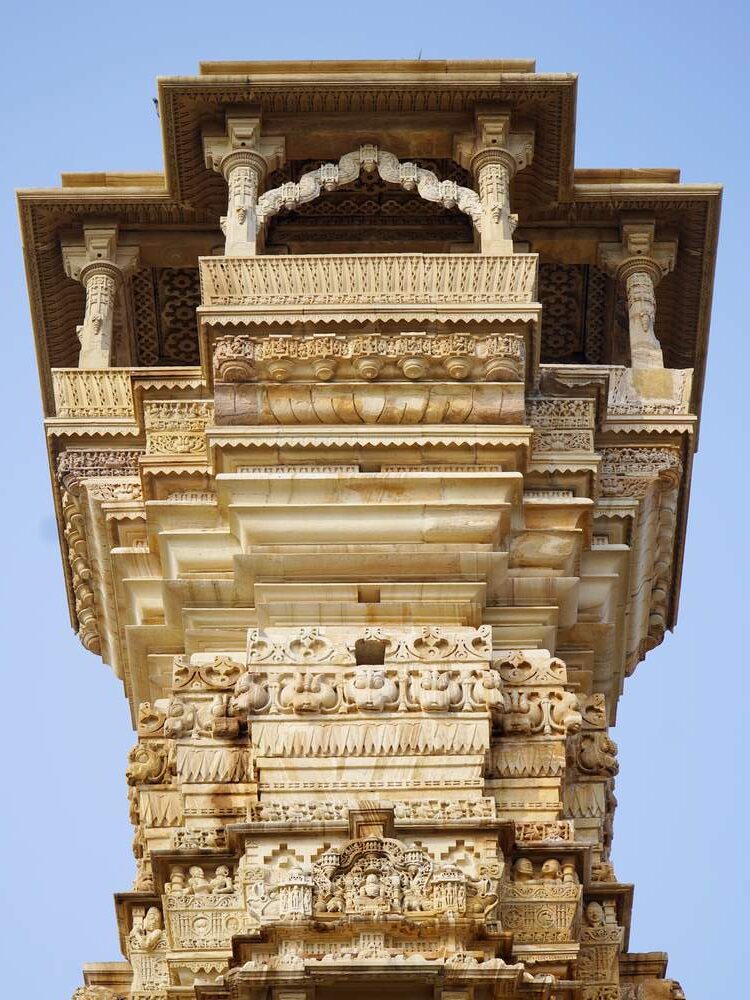
Jain Kirti Stambha is a tower dedicated to Jain worship dating back to the 12th century. Indeed, Chittorgarh has been an important Jain religious center for several centuries. The monument is composed of 7 floors and measures 23 meters in height with an impressive level of detail. This is one of the best things to visit in Chittor. A different tower exists within the walls of the fort, the Viyaja Stambha Tower.
Viyaja Stambha
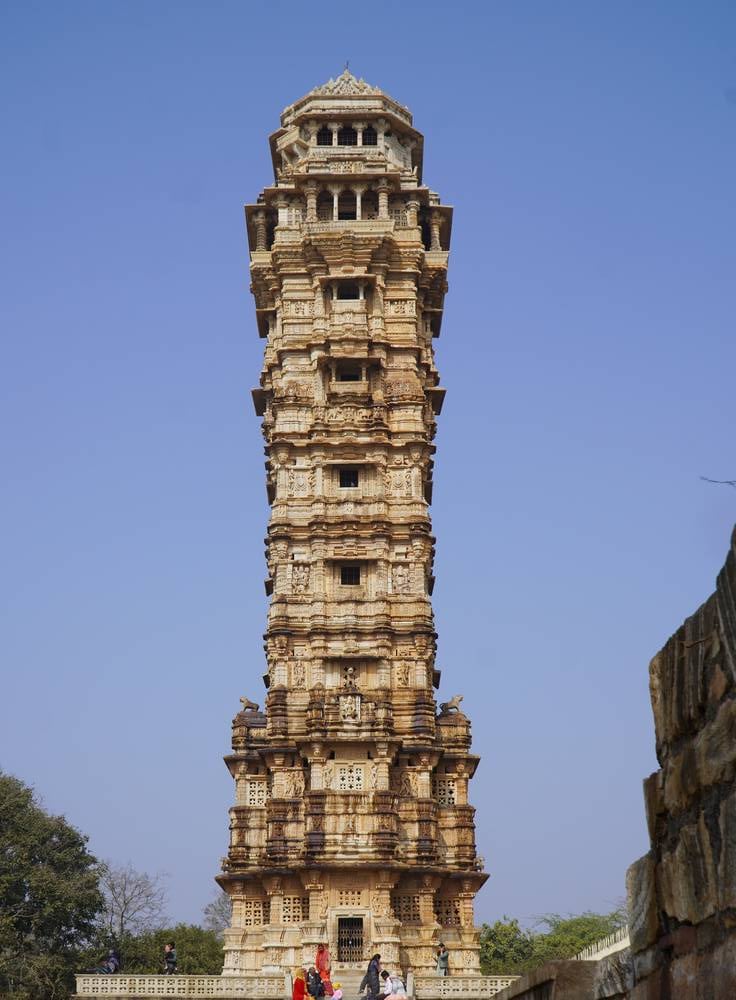
This tower is different from the previous one since it was erected in 1448 by Rajput Rana Khumba following a victory against the army of the Turkish Sultan Mahmoud Khalji who ruled Malwa (present-day Madhya Pradesh). The tower measures 37 meters and is dedicated to the Hindu deity Vishnu, but it also features the representation of a Jain goddess. This activity is unavoidable.
The gates of Chittor
A total of 8 fortified gates are located around Chittor Fort (pole in Hindi), 7 of which are located one after the other on the main bank. Ram pole is the main gate, it was built in the 15th century:
1. Ram Pole
2. Laxman Pole
3. Suraj Pole
4. Ganesh Pole
5. Hanuman Pole
6. Bhairav Pole
7. Padan Pole
8. Jorla Pole
The best view point
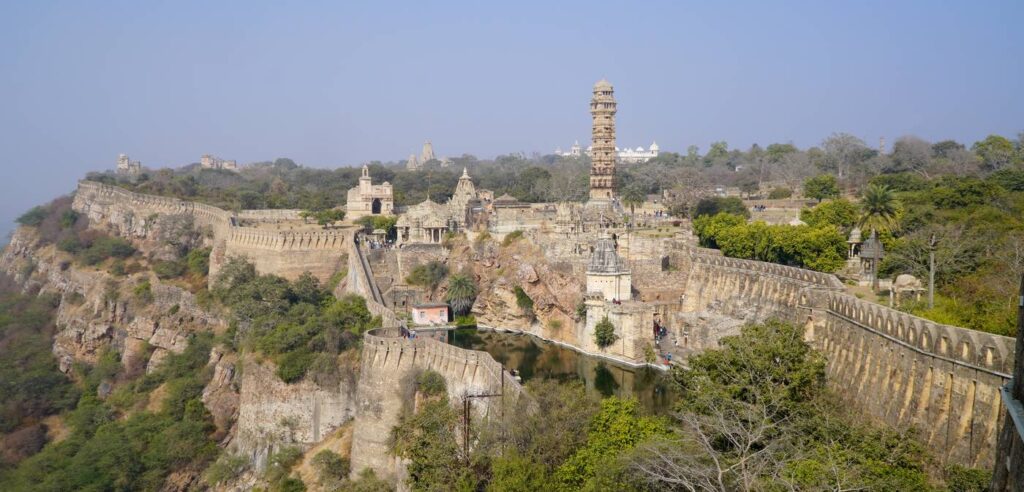
When I looked at photos of Chittor’s fort, a point of view often stood out and obviously it is one of the most beautiful. I found it when I got off the road and along a rampart. You must go to the location below and then go straight on the wall by the sandy path.
Kunds and stepwells
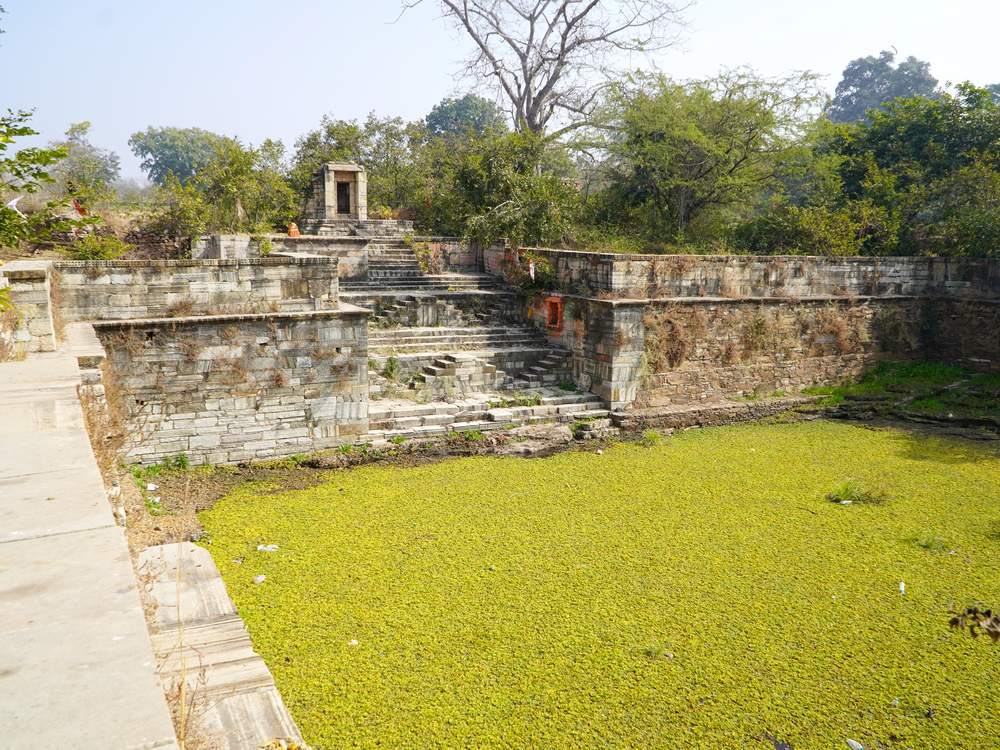
Chittor has many kunds (natural/artificial reservoirs or lakes) and stepwells, called baoli or baori. Here are the most important ones:
Gaumukh Kund
It is located a short walk from the Vijaya Stambha Tower, bordered by two ancient Hindu temples. It is also a place where there are many langurs ready to steal every piece of food you have in your hands.
Khattan stepwell
This well is just after the elephant pond. It is very beautiful but is invaded by the surrounding nature and neglected.
Ratneshwar kund
Located on the northern tip of the fort and right in front of Rana Ratan Singh’s palace, this kund is one of the most beautiful and one of the best places to take a break. Moreover, there is no one.
Bhimlat Kund
Bhimlat is a very well maintained kund and a nice place to land. It is located precisely in the center-east of the fort.
kukuteshwar Kund
This kund is very similar to Gaumukh Kund. It is bordered by the old town with stunning views of the modern city.
Elephant Pond
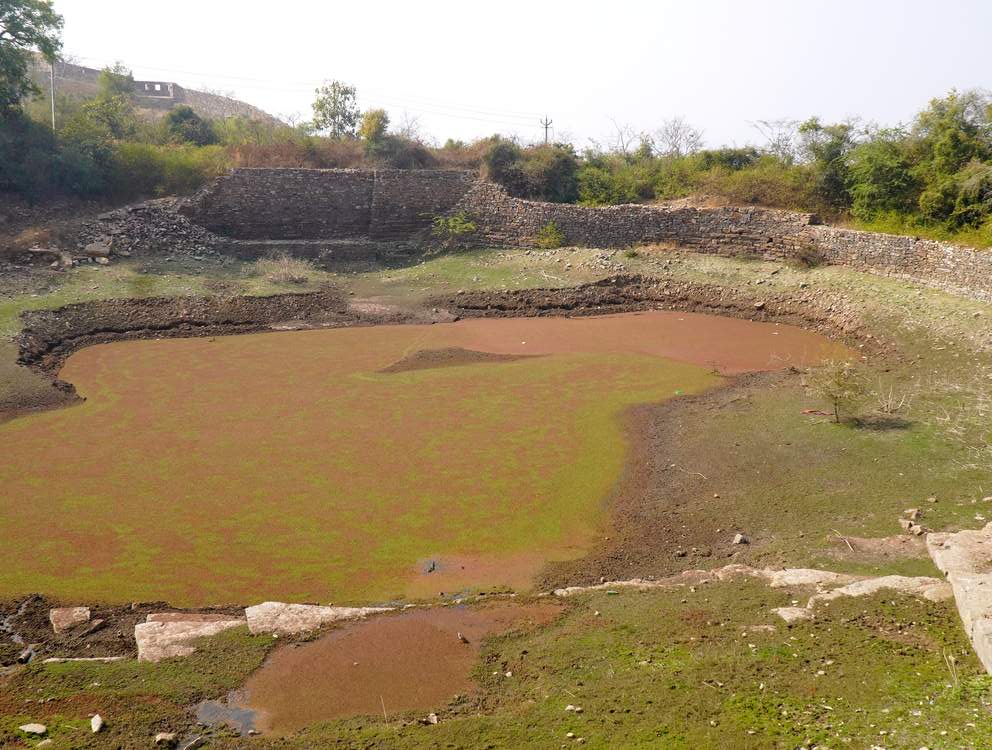
A few minutes’ walk south of the main fort complex is the pond where elephants bathed during the time Rajputs ruled.
The palaces of Chittor
1. Fateh Prakash Palace
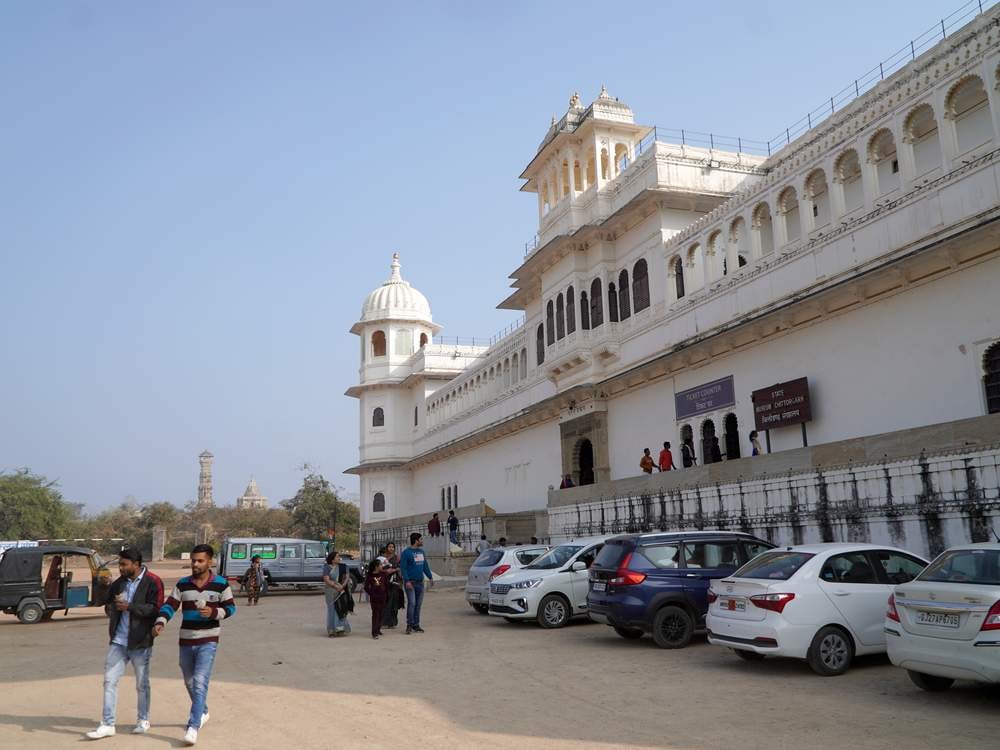
This palace was built in the early 20th century by Maharaja Fateh Singh. Part of it has been converted into a museum which contains mainly ancient weapons and objects used by the royal family of Mewar (not to be confused with Marwar and Mewat) and also some documentation on the history of the fort.
2. Jaimal-Patta Palace

This palace is located along the road that borders the elephant pond, a few minutes walk. It is very well maintained and converted into a Hindu temple. Don’t forget to take off your shoes right in front of the first steps once you have passed the entrance.
3. Gora Badal Palace
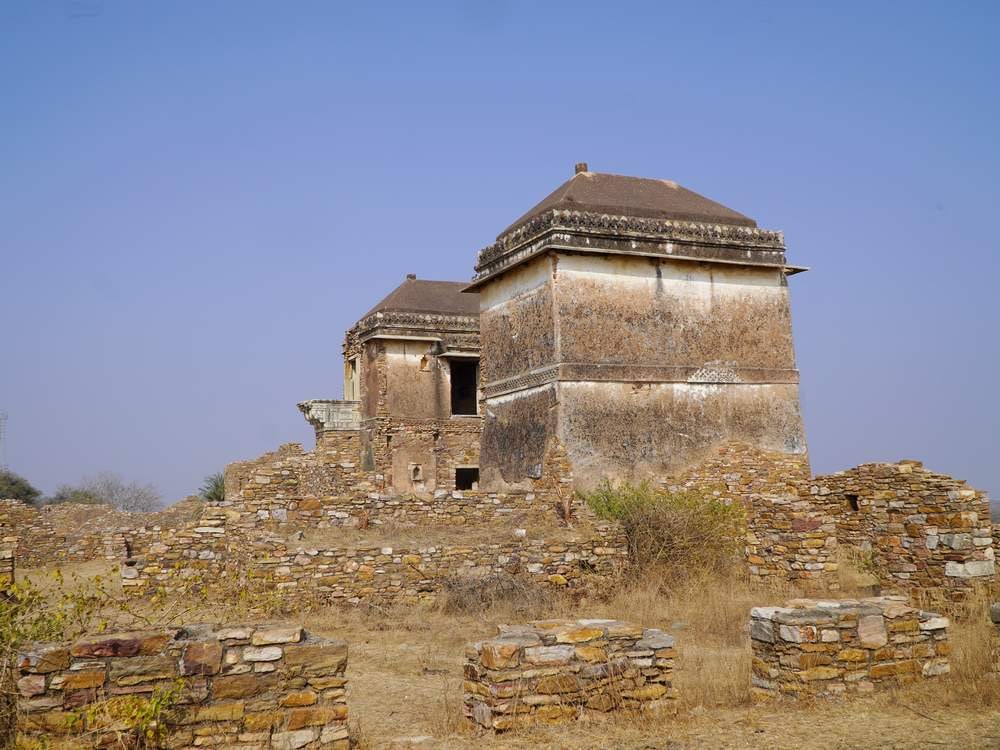
A good part of the Gora Badal Palace is in ruins but its enclosure is gigantic. The strong point is that there is no one there. You will have it to yourself. In fact, it is not even indicated and barely visible.
4. Rana Ratan Singh Palace
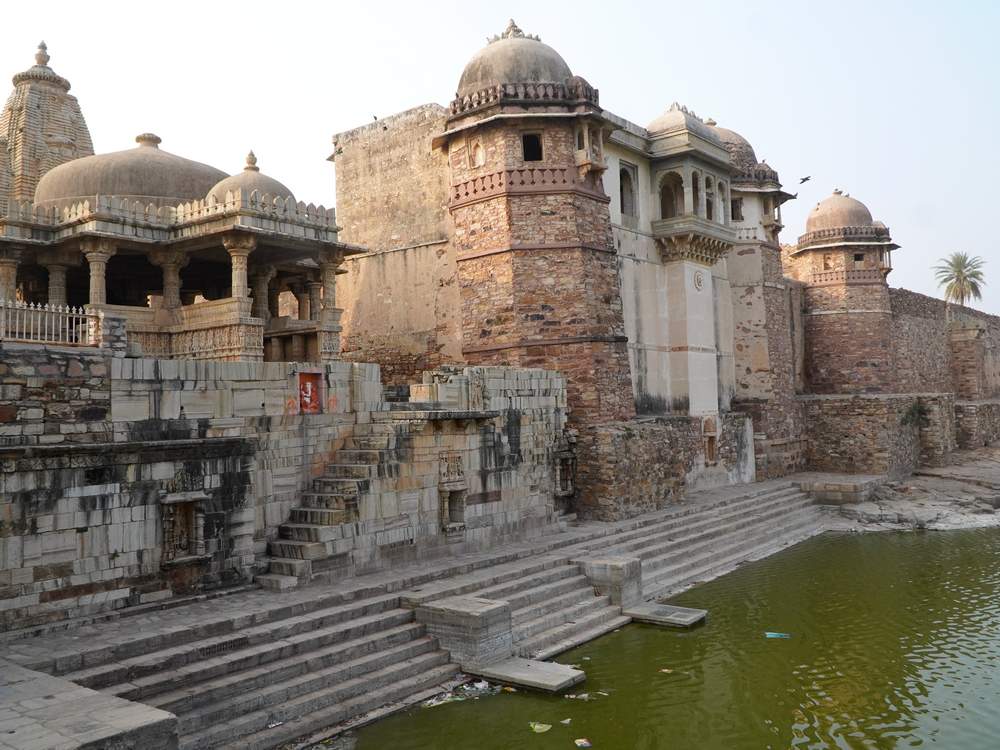
The palace of Maharaja Rana Ratan Singh II is a beautiful and very well maintained place. Again, it is deserted. You can combine its visit with the beautiful kund of Ratneshwar and the ancient temple dedicated to Lord Shiva that border it.
5. Maharani Padmini Palace
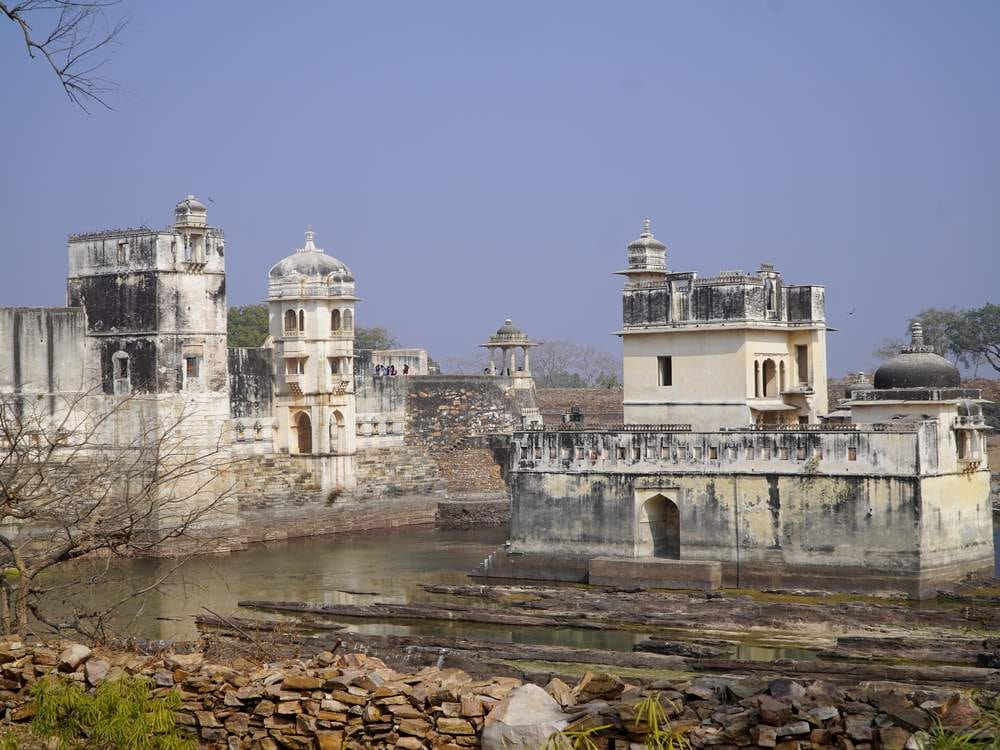
This majestic Maharaja Palace is located just before Gora Badal Palace. You can not miss it since it is visible from afar, bordered by a very large water point. Another outbuilding of the palace in the same architectural style, Rani Padmavati Mahal, is right in the middle of the water and accessible.
6. Khattan Palace

Khattan Palace is right in front of Maharani Pamini Palace on the waterfront. It seems inaccessible but you can visit it. You simply have to bypass it from the main road to access it.
7. Rana Khumba Palace
Rana Khumba Palace is a ruin filled with legends, including the birth of the founder of Udaipur (Maharana Udai Singh) who was born here. It is also said that this place is haunted by spirits. Here a festival of sounds and lights takes place on certain occasions. The place is beautiful and the architecture of the palace is great.
8. Meera Palace
The Meera Palace is located right in front of the previous one. It has stunning views of Chittaurgarh City.
Bhamashah Haveli
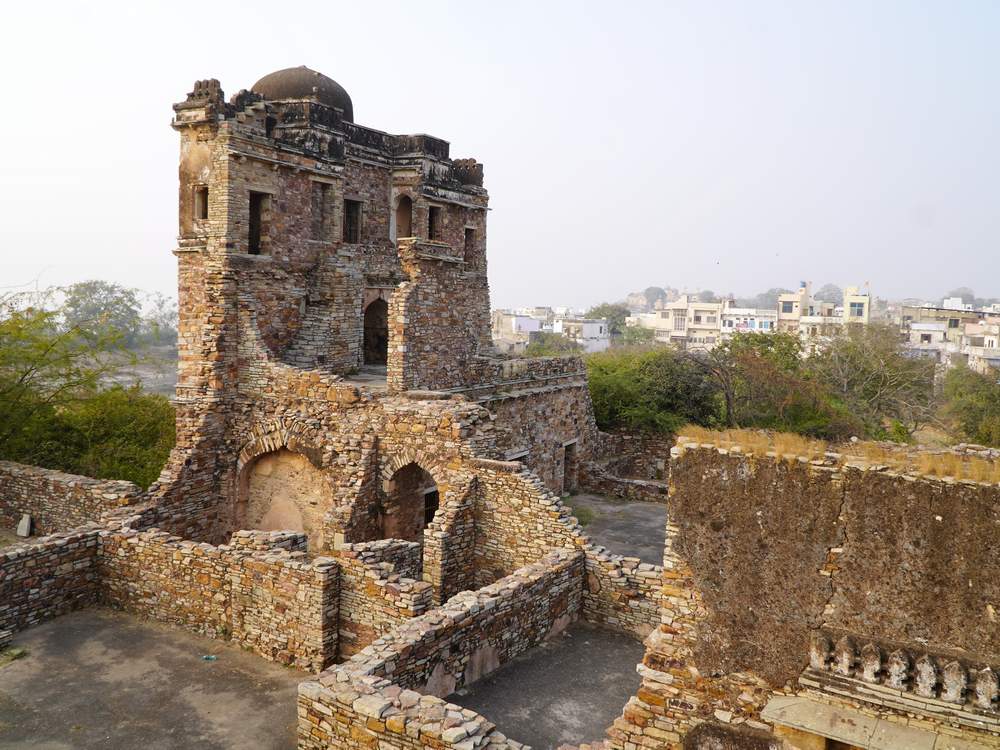
South of the old town of Chittor Fort are the ruins of a very large and magnificent haveli. The place is completely surrounded by brambles but accessible through the entrance to a park. Again, I saw absolutely no one, ideal for taking beautiful photos.
The old town
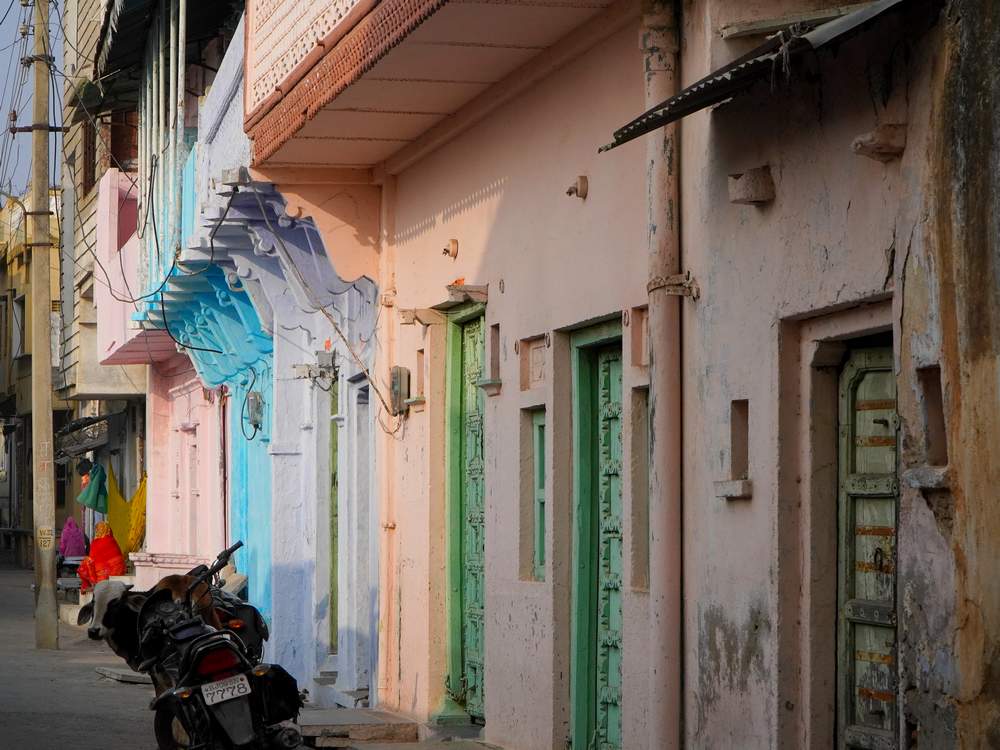
Located a little before the northern tip of the fort, the old town is an interesting place to visit, with colorful old dwellings, old reservoirs and a pleasant atmosphere. The streets are deserted by tourists.
Temples
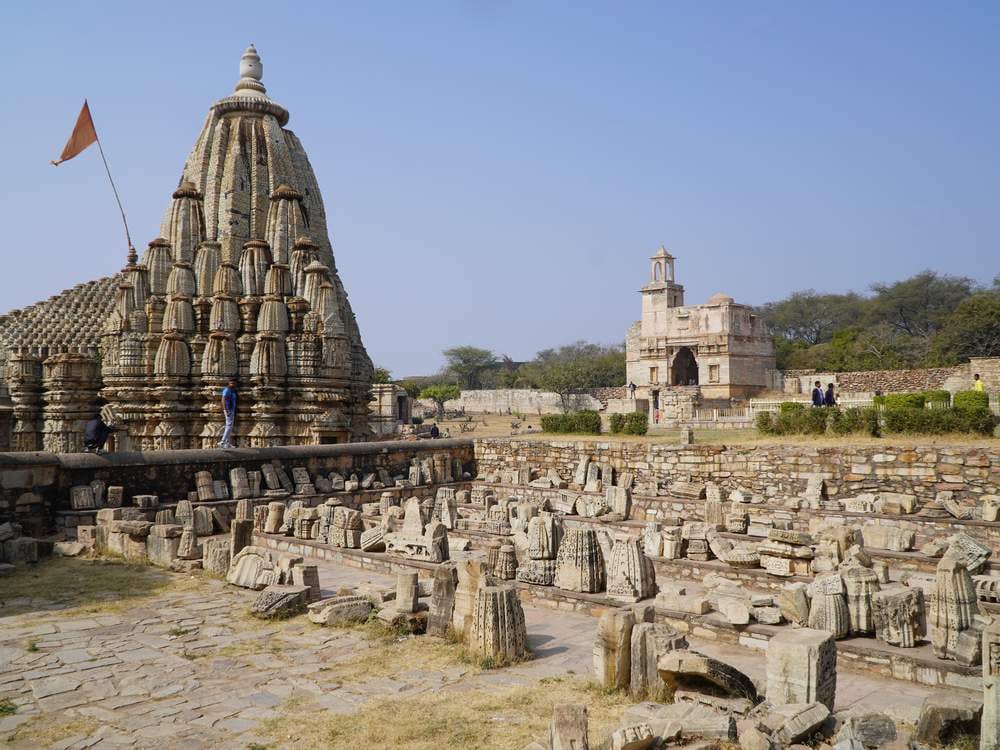
Chittor Fort has many historical and ancient temples. These include places of worship dedicated to Jainism, common Rajputs and known for their religious pluralism, with some ancient Hindu temples. Here are some of the most important of them:
The deer park
The “Deer Park” is actually inhabited by deer and antelopes. This place is known for its remarkable biodiversity and also has a large amount of different bird species. The whole eastern part of the fort below is also a very good place to hike in nature thanks to its many trails. It is accessible from the other side, i.e. completely opposite the main entrance. To access this part, you will have to go through the “Suraj Pole” gate.
📍 See the deer park on the map
Information to visit the fort
Travel tips
1. Visit the fort with a guide
Tour guides wait at the entrance of the fort. They are in rickshaws or motorcycles. The package seems to be the same for all, 600 INR. Their rates are usually 400 INR but without stopping to visit the inside of palaces or monuments. Personally, I visited the fort alone since I was already very well documented beforehand but it turns out that the complex is huge and that it would have been smarter for me to pay the services of a guide to see some isolated places and not forget to visit some places.
2. Getting off the path
Visitors are all around the tallest tower of the fort and most of the other historical sites are almost deserted. I visited palaces and haveli with absolutely no one around me. There is a huge amount of other monuments to see. It’s so big.
Frequently Asked Questions
1. How long does the visit last?
It takes at least half a day if you are conveyed by a guide. If you are on foot, it is a full day arriving as soon as the fort opens. However, 2 days are required to visit the entirety including the nature reserve.
2. Is it possible to find food on site?
The fort is filled with street food vendors, fresh juices and of course, national chai. The only handful of restaurants can be found in the town of the fort.
3. Is it possible to stay in the fort?
As with restaurants, there are a handful of hotels on-site.
4. How much does it cost to ride by rickshaw to get to the fort?
The race costs 50 INR. You can also walk there. It took me 45 minutes to get there from downtown.
5. What are the opening hours of the fort?
The fort is open daily from 09:00 to 17:00.
6. What is the entry fee?
The entrance fee to the fort costs INR 600 for all foreigners. It is a daily rate.
7. How many historical monuments are there?
There are a total of 65 historical monuments in Chittorgarh.
8. How many palaces are there?
There are 8 palaces within the fort.
9. How many temples are there?
There are 19 important historical temples in Chittorgarh. This number does not include the dozens of other smaller temples in the fort.
10. How many water points are there?
There are 20 large water points in the fort. This includes stepwells, reservoirs and ponds but does not include smaller ones.
11. How many towers are there?
There are only 2 large towers within the fort.
12. Can I enter the fort with a personal vehicle?
It’s quite possible. Only the main historical complex is inaccessible. Visiting Chittaurgarh Fort with your vehicle is a very convenient option.
How to get to Chittorgarh?
➡️ Travelling by train in India : complete guide
From Udaipur
Chittorgarh is located about 110 km from Udaipur.
From Udaipur City Railway Station (UDZ):The UDZ JP EXP (12991) train departs every morning at 06:
00 hours. The journey takes 2 hours.
From Udaipur City Railway Station (UDZ):
The CHETAK EXPRESS train (20474) departs every evening at 17:00 hours. The journey takes 1h50.
From Udaipur City Railway Station (UDZ):
The UDZ KURJ EXP (19666) train departs every evening at 22:15 hours. The journey takes 1h50.
Please note: There are 2 train/railway stations in Udaipur and only Udaipur Railway City (UDZ) has a connection with Chittaurgarh. The other station is Ranapratapnagar (RPZ) and does not serve this destination.
From Bundi
Chittorgarh is located about 150 km from Bundi.
From Bundi Railway Station (BUDI):
The MEWAR EXPRESS (12963) train departs every night at 01:25 hours. The journey takes 3h15m.
From Bundi Railway Station (BUDI):
The KOTA MDS EXP (19816) train departs every morning at 05:25 hours. The journey takes 2h25m.
From Bundi Railway Station (BUDI):
The JAB RTM EXP (19818) train departs every morning at 06:35 hours. The journey takes 4h15m.
From Ahmedabad
You must go to Udaipur to go to Chittorgarh, with 2 different tickets.
Other options
By bus
Many buses leave from all the surrounding cities, even from Ahmedabad. These companies all offer different prices and schedules, so you will need to inquire on site.
By flight
There is no airport in Chittorgarh, nor in Bhilwara. You will therefore have to consider landing at the nearest Udaipur International Airport and then travel by land.
When to visit Chittorgarh?
● Favourable times
The ideal months to visit Chittorgarh with cool weather at night and pleasant during the day are January, February or even March and from November to December.
● Unfavourable times
June, July and August fall into the monsoon period. It’s raining a lot. The remaining months are the hottest with temperatures difficult to travel.
